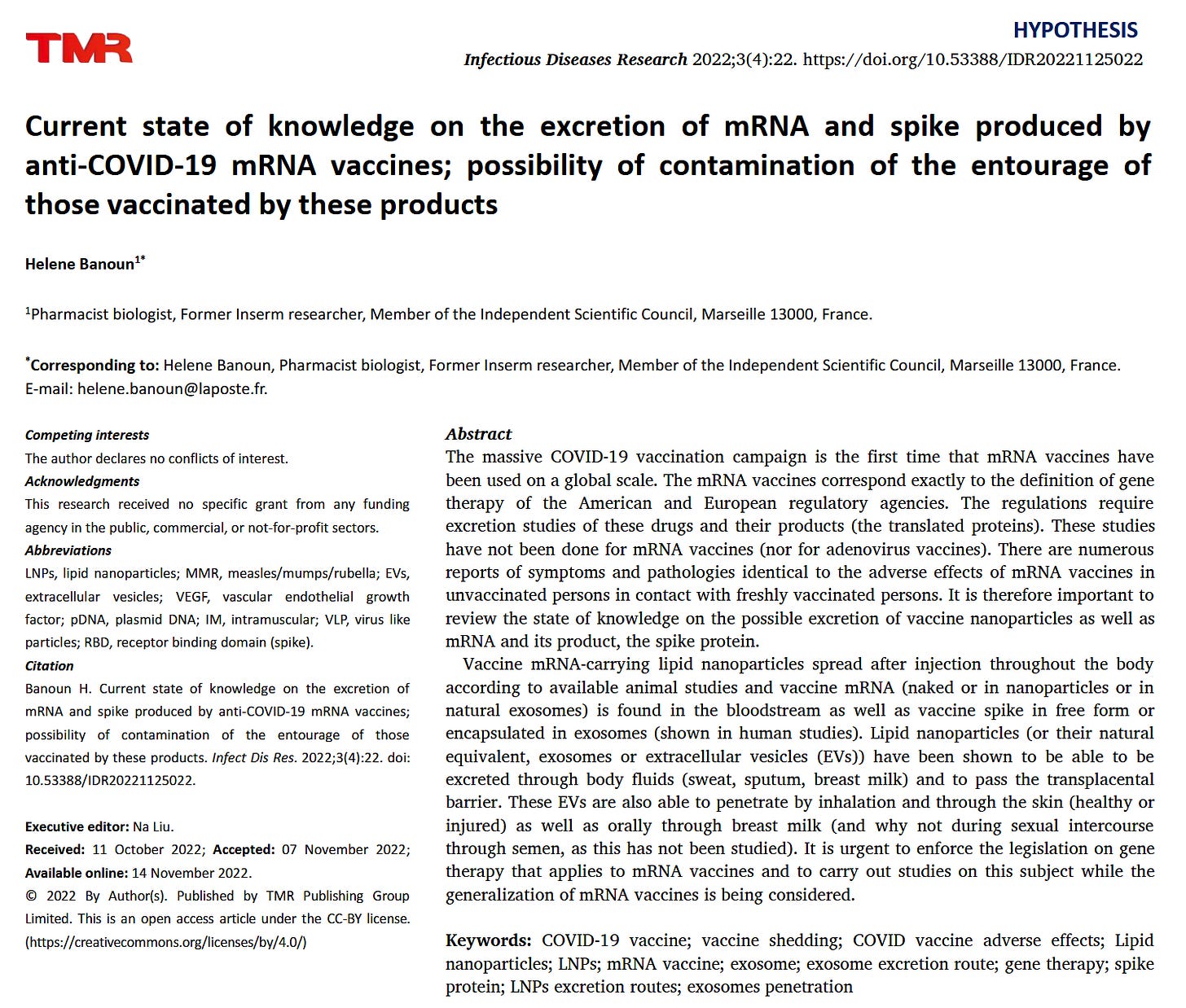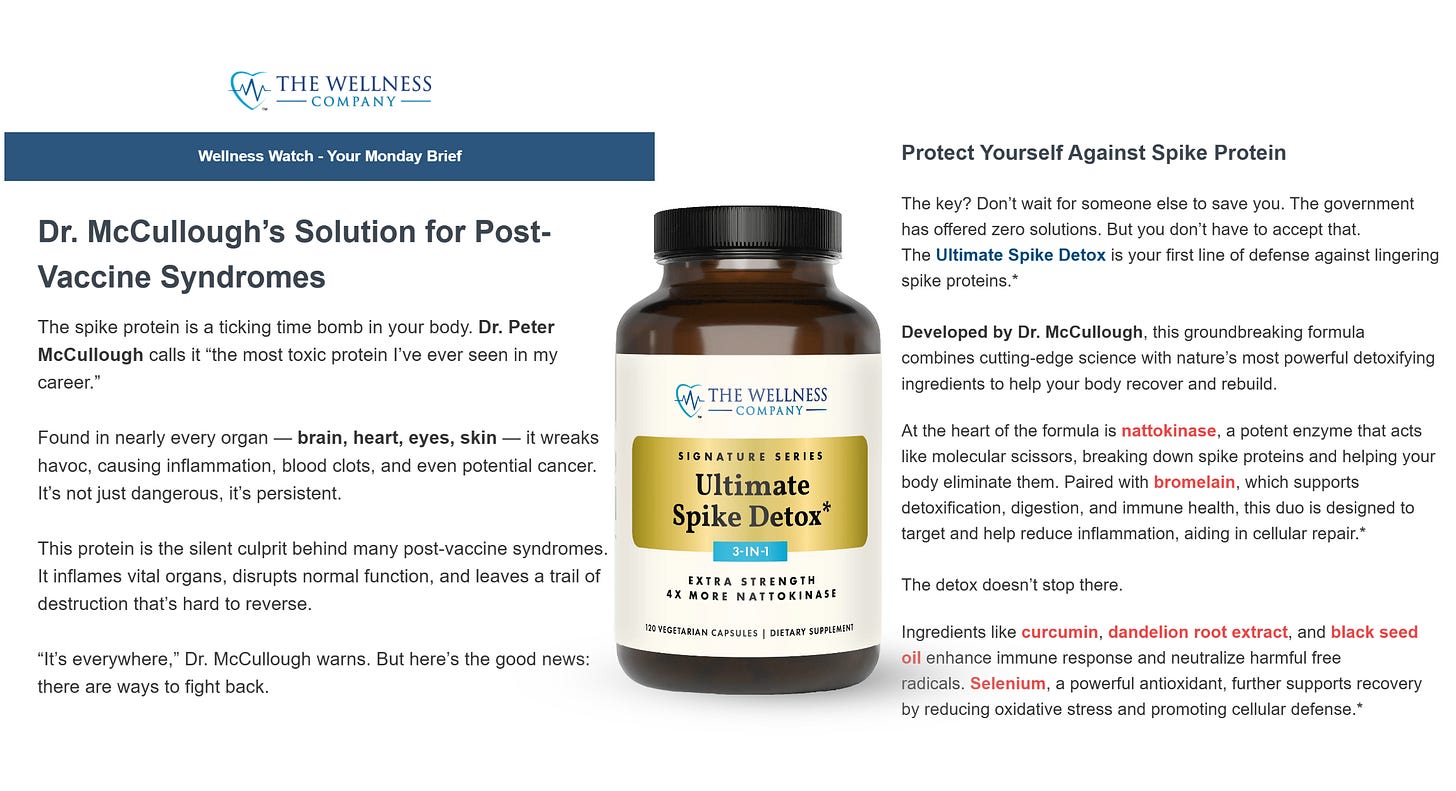By Peter A. McCullough, MD, MPH
Most of us think of sweat as an inconvenience or something to avoid. On the other hand, there is much to consider on the benefits of sweating.
Human sweat primarily serves to regulate body temperature through evaporative cooling, but it can also play a minor role in excreting certain substances that might be considered toxins or waste products.
Composition of Sweat and Its Basic Function
Sweat is produced by two main types of glands: eccrine glands (found all over the body, responsible for most sweat) and apocrine glands (mostly in areas like the armpits and groin, activated during stress). Eccrine sweat is about 99% water, with the remaining 1% consisting of:
Electrolytes like sodium, chloride, and potassium.
Small amounts of metabolic byproducts such as urea (a nitrogenous waste from protein breakdown), lactic acid, and ammonia.
Trace minerals and other compounds.
The primary purpose is thermoregulation: When your body heats up (e.g., during exercise or in hot environments), sweat evaporates from the skin, dissipating heat and preventing overheating. This is an essential physiological process, but detoxification is not its main intent.
Evidence for Sweat’s Role in Detoxification
While the liver and kidneys handle the bulk of detoxification—processing toxins via biotransformation and excreting them through urine, feces, and bile—some research indicates that sweat can eliminate small amounts of certain environmental toxins or heavy metals. This occurs because these substances can accumulate in tissues and be mobilized into sweat during induced sweating (e.g., via exercise, saunas, or heat exposure). Here’s what studies show:
Heavy Metals Excretion: Multiple studies have detected heavy metals like nickel (Ni), lead (Pb), copper (Cu), arsenic (As), and mercury (Hg) in sweat, often at higher concentrations than in urine or blood. For instance, induced sweating (through exercise or saunas) has been shown by Kuan et al to reduce body burdens of these metals by mobilizing them from storage in tissues and excreting them via sweat glands. Endurance exercise appears more effective than short, intense bursts for lead excretion.
Other Chemicals: Sweat may help eliminate bisphenol A (BPA, a plastic chemical linked to health issues) and some polychlorinated biphenyls (PCBs, industrial pollutants). Genuis et al found BPA in sweat, suggesting it’s a viable route for monitoring and reducing exposure. Similarly, certain PCBs bind to sweat components and are excreted, though not all types.
Bacterial and Microbial Benefits: Sweat contains glycoproteins that can bind to bacteria on the skin, potentially aiding in their removal and reducing infection risk. healthline.com This isn’t true “detox” but contributes to skin health by clearing microbial threats.
These effects are more pronounced with “induced sweating” methods like saunas, hot yoga, or vigorous exercise, which increase sweat volume and may mobilize stored toxins from fat tissues or organs as suggested by Hussain et al.
Limitations and Myths
Despite the above, sweating is not a primary or efficient detox pathway for most toxins:
The amounts of toxins excreted in sweat are typically minimal compared to what the kidneys and liver handle. For example, urea in sweat is only about 1% of what’s excreted in urine.
Claims that sweat “cleanses” the body of alcohol, drugs, or general “toxins” are not supported by evidence; sweat doesn’t significantly purge these. Overzealous sweating (e.g., in extreme heat) can lead to dehydration, electrolyte imbalance, or heat-related illnesses without meaningful detox benefits.
COVID-19 mRNA Vaccines
Vaccine mRNA has been detected in blood/plasma (up to 3.2 years post-vaccination in some cases). Vaccine mRNA has been found in breast milk which is modified sweat (trace amounts, up to 2 ng/mL in whole milk and 17 pg/mL in extracellular vesicles (EVs or exosomes) within 48 hours to a week) after vaccination. SARS-CoV-2 RNA and Spike protein has been found in semen during acute infection. Polyethylene glycol (PEG), a LNP component, has also been found in breast milk. These findings indicate Pfizer and Moderna mRNA and possibly vaccine Spike protein can be detoxified from the body through sweat.
Hypotheses on Sweat Excretion:
Sweat naturally contains EVs/exosomes from blood and skin cells (e.g., keratinocytes), which carry functional RNAs like miRNAs (20-200 bp, selectively enriched from plasma). Vaccine LNPs (60-100 nm) are structurally similar to these EVs and could theoretically package mRNA or Spike protein for excretion via sweat glands, especially during increased sweating (a reported vaccine side effect).
Given the enormity of mRNA vaccine injuries and disabilities after vaccination there is an urgent need for pharmacokinetic/dynamic research including elucidation of routes of elimination including sweat.
In summary, while sweat can excrete trace amounts of heavy metals, some chemicals, and most importantly COVID-19 vaccine mRNA—potentially aiding minor detoxification in people with high exposures—it’s not a substitute for the body’s main detox systems. Focus on a balanced diet, hydration, avoiding toxin sources including mRNA vaccines, and daily compliance with McCullough Protocol Base Spike Protein Detoxification in addition to regular large volume perspiration is a reasonable course until we learn more on this topic.
Please subscribe to FOCAL POINTS as a paying ($5 monthly) or founder member so we can continue to bring you the truth.
Peter A. McCullough, MD, MPH
FOCAL POINTS has partnered with Patriot Mobile to defend your medical freedom. Join Patriot Mobile today!
















